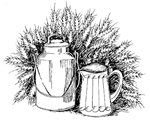Cellular Senescence
 As we age, more and more of our cells enter a stage known as senescence. Senescence is a word that means “to grow old.” Senescent cells lose their ability to divide and often suffer the fate of apoptosis which is cellular death. However, some of these senescent cells don’t readily die but stick around and produce conditions such as chronic low grade inflammation that negatively affect healthy cells and tissues Senescent cells have been shown to inflict damage on stem cells. Stem cells are “starter cells” that differentiate into the many specialized cells that make up body tissue such as skin, bone and muscle.
As we age, more and more of our cells enter a stage known as senescence. Senescence is a word that means “to grow old.” Senescent cells lose their ability to divide and often suffer the fate of apoptosis which is cellular death. However, some of these senescent cells don’t readily die but stick around and produce conditions such as chronic low grade inflammation that negatively affect healthy cells and tissues Senescent cells have been shown to inflict damage on stem cells. Stem cells are “starter cells” that differentiate into the many specialized cells that make up body tissue such as skin, bone and muscle.
Among the various causes of cells losing their ability to divide and thus become senescent is the shortening in length of telomeres. Telomeres are sequences of DNA found at the end of chromosomes in the nucleus of cells. Loss of length of telomeres results in chromosomes losing the ability to facilitate cellular replication. Such loss of telomere length is a normal process of aging and, therefore cellular senescence is a normal part of aging.
While it has been shown that the body at times uses senescent cells to promote the healing of injured tissue and even retards the growth of cancerous tumors, these cells also create an abundance of harmful effects and are considered a primary cause of age related disease. Since these cells increase in number as we age, much research is being done to identify ways to reduce their numbers and negative impact.
Recent studies have shown that reducing the number of senescent cells in the body through the use of senolytic agents can improve various markers of aging. Senolytic agents are compounds that are used to reduce the number of senescent cells.
In the October 28, 2016 edition of the journal Science, a study was published where arterial plaque was induced in mice and when a certain class of senescent cells was removed, the growth of the plaque was inhibited and there even was regression of plaque buildup. The researchers concluded that “senescent cells are key drivers of atheroma formation and maturation and suggest that selective clearance of these cells by senolytic agents holds promise for the treatment of atherosclerosis.”
In a study published in the September 4th 2017 edition of the journal Nature Communications, it was found that the use of various senolytic agents on age accelerated mice demonstrated improvements in forelimb grip strength, health of their fur, improved gait, improved kyphsois (straighter spine) and overall improvement in body condition. The researches involved in this study concluded that their “results strongly suggest that optimizing approaches to reduce senescence or eliminate senescent cells could have a significant impact on human healthspan.”
In a Mayo Clinic study, senolytic agents were used to reduce senescent cells in the brains of mice that were bred to experience the symptoms associated with Alzheimer’s disease. It was found that the removal of senescent cells from the brain lessened short-term memory loss and prevented the neuro degeneration seen in mice not treated with senolytic agents.
In the studies mentioned above, the flavonoid quercetin was used along with the chemotherapeutic drug dasatinib. Dasatinib is used to treat leukemia. it was discovered that a combination of quercetin and dasatinib successfully removed senescent cells better than either quercetin or dasatinib alone.
Quercetin is a polyphenol flavonoid. Polyphenols are a class of over 8000 compounds found in plants that provide an abundance of benefits to the body including antioxidant and anti-inflammatory activity along with various regulatory processes. Flavonoids are a subdivision of polyphenols that give color to plants.
A number of studies are being done, including human trials, in an effort to identify senolytic drugs that will rid the body of senescent cells in an overall effort to slow down the ageing process. Recently the company Life Extension marketed a non-drug senolytic compound called Senolytic Activator which features a quercetin phytosome and a black tea extract containing theaflavins.
Life Extension scientists discovered that certain polyphenol compounds in black tea called theaflavins have demonstrated senolytic effects similar to the drug dasatinib without the side effects this drug can produce. These scientists have combined theaflavins with quercetin phytosome to make the natural senolytic product called Senolytic Activator. A phytosome is where a fatty acid is attached to a nutrient to produce much greater absorption of that nutrient into the blood stream.
Current research suggests that intermittent usage of senolytic compounds is more effective than daily usage. It is recommended that the serving size of two capsules of Senolytic Activator be taken just once a week.
We carry Senolytic Activator at Milk 'N Honey.